The first name of “gruppo” (groupset) came with the Campagnolo Gran Sport rear derailleur in 1953. Rear & front derailleur, hubs, and levers were for the first time sold as part of a unique system.
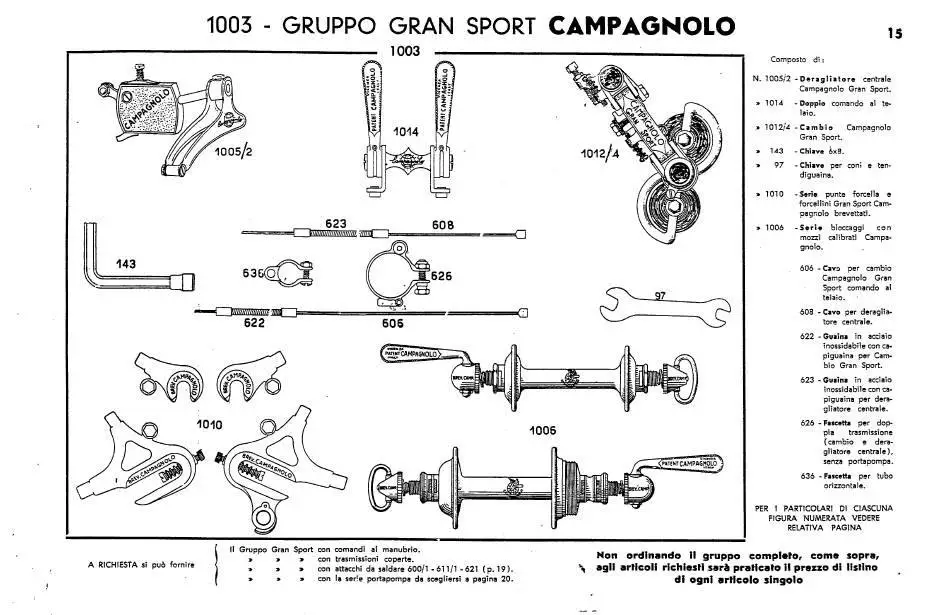
Campagnolo Gran Sport
The Campagnolo Gran Sport derailleur was Tullio Campagnolo’s brilliant application of the deforming parallelogram rear derailleur design. He didn’t invent it, there were several early designs, even one with two cables. But, Tullio just did it better than anyone else. Because of that superiority, it became the professional racer’s derailleur of choice.
The Campagnolo Gran Sport came out in 1953 and was made until it was replaced by the aluminum Nuovo Record in 1967. An updated version of the Gran Sport, called “Record”, was produced starting in 1963 and was manufactured until sometime in the 1970s.
Both the Gran Sport and that original Record rear derailleurs were made of chrome-plated bronze.
Tullio Campagnolo’s quest went beyond the production of derailleurs. New components were introduced in 1956, such as the seat post, headset, and pedals. The crankset, introduced in 1959, ultimately completed what is still commonly referred to as the “groupset”. It was an innovative and paramount concept.
The groupset idea caught on in the years thereafter thanks to the creation of components designed to interact with perfection.
The story begins in the late 1940s when Tullio Campagnolo realized that his Cambio Corsa (shifting system) was reaching the end of its lifespan. He sensed that modern derailleurs, like those used by cyclo-tourists, would be found on future racing bikes. After evaluating the Nivex parallelogram derailleurs, he designed his first parallelogram derailleur.
In 1950 and 1951, a small series of pre-production models were made as Campagnolo fine-tuned the derailleurs. In 1953, Campagnolo introduced the final production “Gran Sport,” which remained unchanged for many years. Even the 1980s Super Record derailleurs use the same basic geometry of the Gran Sport, albeit with a modified pulley cage pivot location and lighter materials.
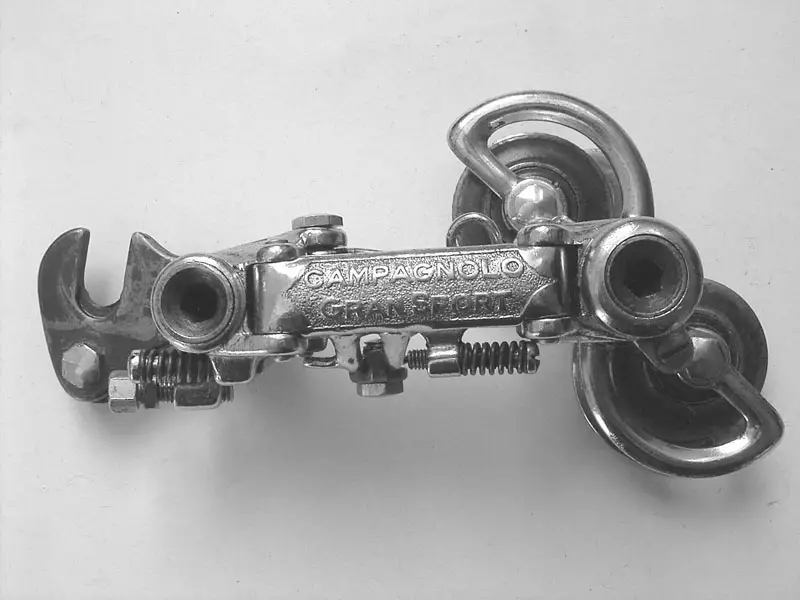
From Cambio Corsa to Gran Sport
Tullio Campagnolo’s previous derailleur system, originally developed in the mid-1930s, was the rod-activated Cambio Corsa model – which had a pretty narrow gear range and was cumbersome to use. These early derailleurs used no pulleys because racers of the time were convinced (mistakenly) that pulleys would add too much drag.
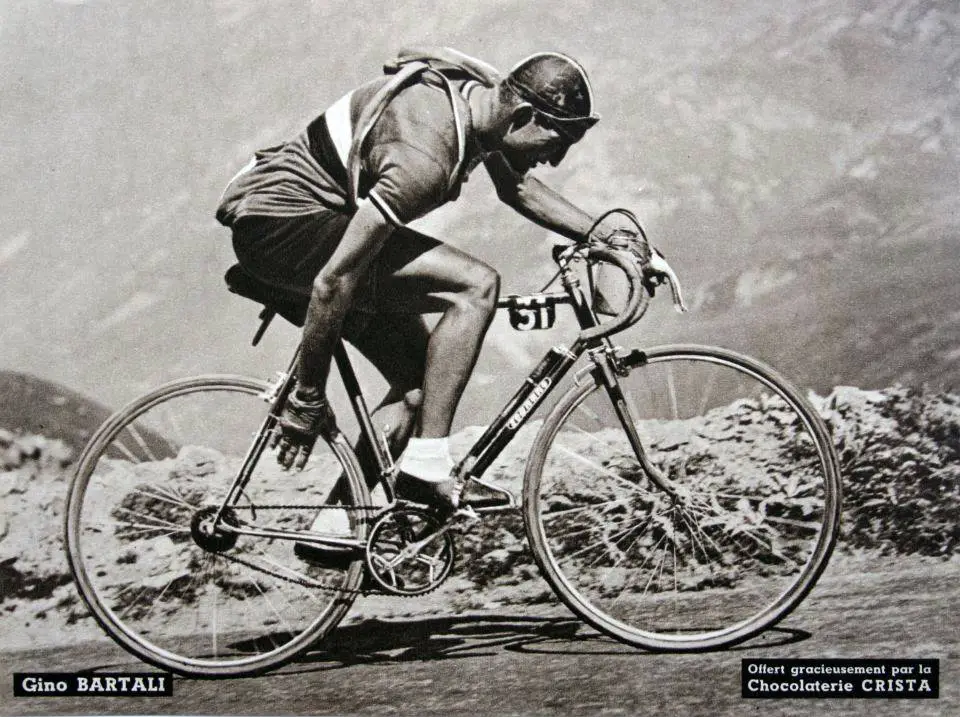
To shift gears, the rider reached down low and behind himself to work the levers mounted on the seat-stay. The rider moved one lever to open the rear wheel quick-release, then backpedaled while turning the second lever which operated a “fork” that moved the chain from one cog to another. The wheel moved forward or backward in the dropouts to adjust chain tension. Then the first lever was used again to close the quick release and to lock the wheel in place. A later variation, called the Paris-Roubaix, performed the same basic functions but with only one lever instead of two.
To see one of the Cambio Corsa derailleur systems in operation, see the video below:
In 1949, Italian racing legend Fausto Coppi famously won the Tour de France using Simplex derailleurs (Simplex had paid him to switch), which was probably something of a slap in the face to Tullio Campagnolo. The Simplex was a cable-operated plunger-type derailleur that was considerably easier to use than Campagnolo’s rod-operated designs. Many other top racers also were using Simplex, but ultimately the “defections” told Campagnolo that he had to do something big to reestablish his company at the top among racers of the day. The result was Campagnolo Gran Sport.
The Gran Sport, first introduced at a Milan trade show in 1949, used an articulating parallelogram design, as opposed to the push-rod or plunger action, to move the pulley cage in and out. That first prototype shown used dual cables to move the unit back and forth, but production versions used a single cable plus a return spring. The design was refined further over the first couple of years until a “definitive” version was finalized by 1953.
With only minor changes, that Gran Sport design was the basis for almost all of Campagnolo’s better derailleurs, as well as much of their competition, until the “index shifting” era.
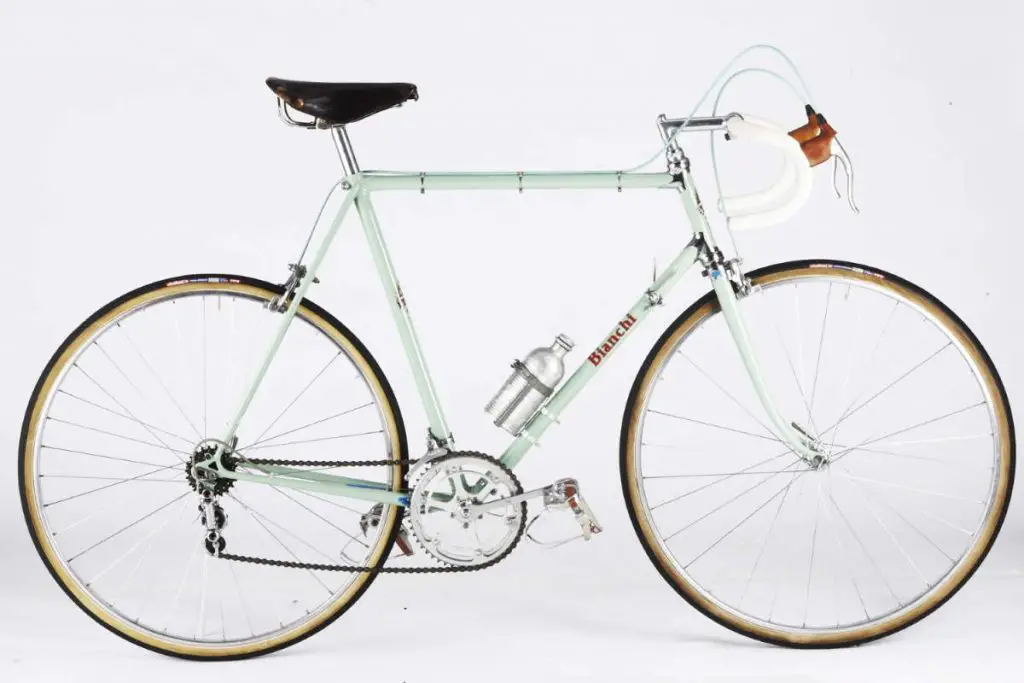
Sources
- Campagnolo Gran Sport Derailleur on the Italian Cycling Journal
- Vintage Components – Campagnolo rear derailleurs on the South Salem Cycleworks website
- Classic Derailleurs: Campagnolo Evolution on bikeretrogrouch.blogspot.com
- Top 18 fastest Paris-Roubaix editions - April 7, 2024
- Col de Tourmalet [Amazing photo from the 1953 Tour de France] - January 11, 2024
- Bernard Hinault and Francesco Moser, 1981 Paris-Roubaix - December 8, 2023
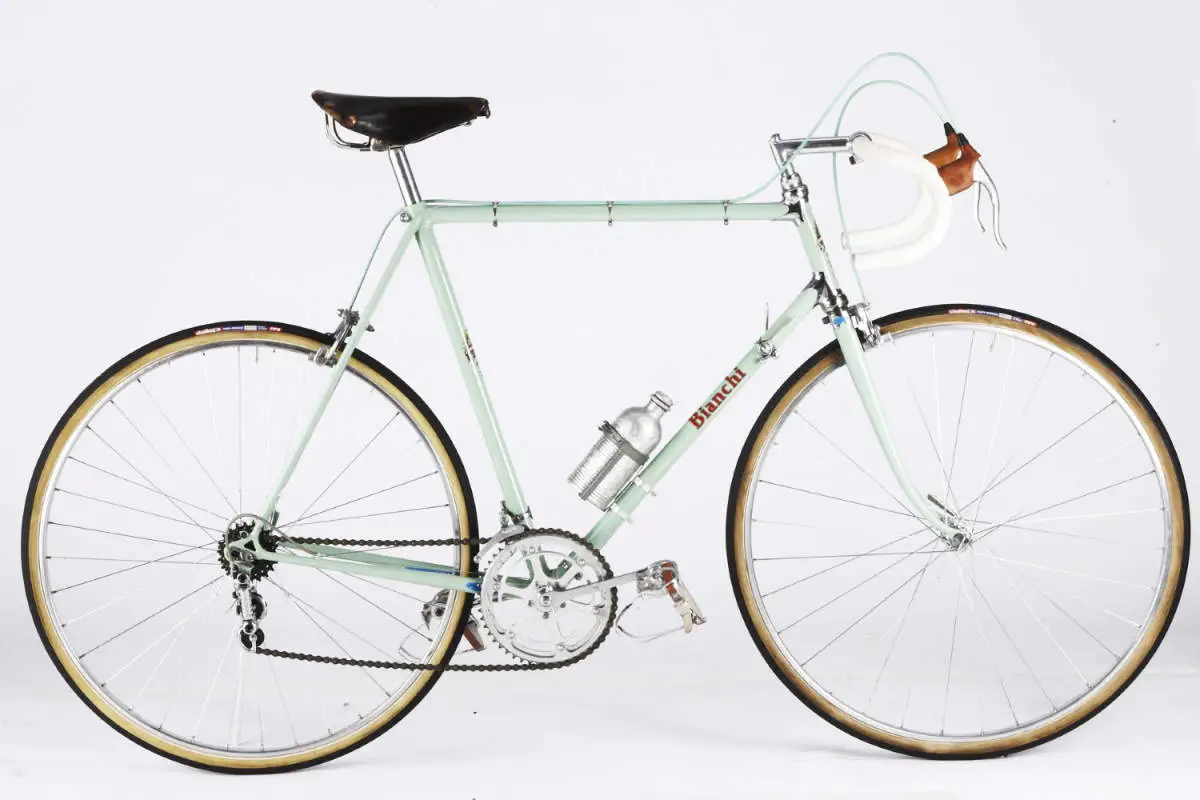
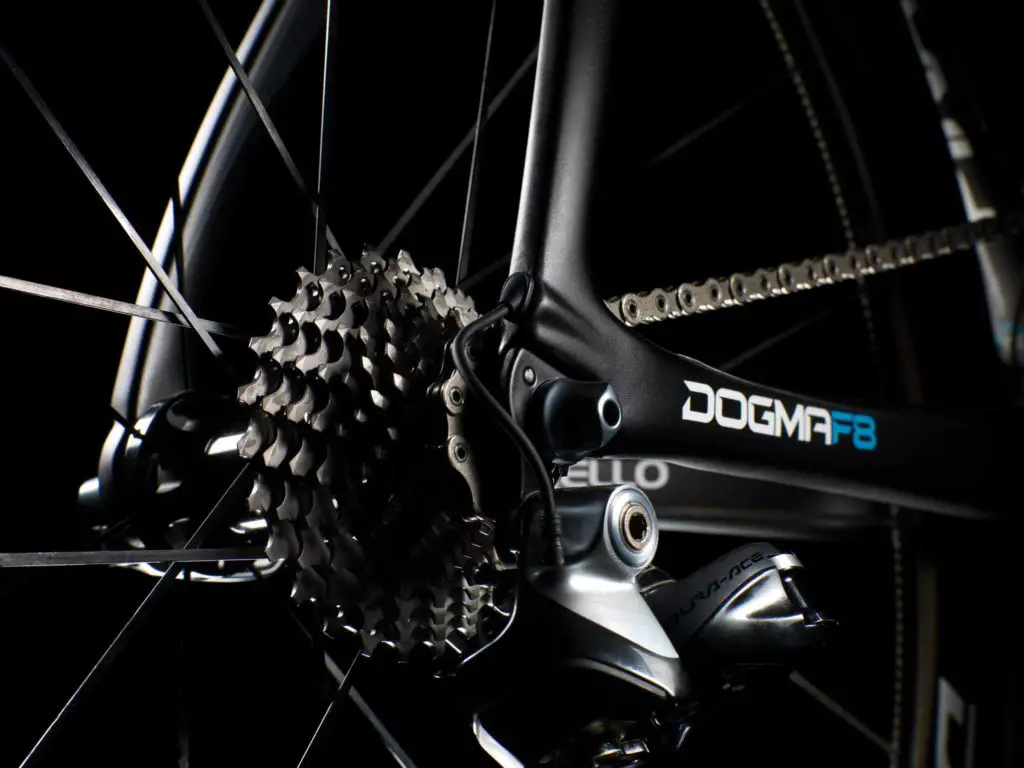

very interesting , thaks a lot !!! With these info now I can stabilized the age of my Fiorelli Gran Tour!!
I am quite surprise that my Campagnolo Grand Tour which bought in Singapore in 1959 which I use for the last 62 years is still working. I think it covered more than 50.000 km already
I am quite surprise that my Campagnolo Grand Sport derailleurs which bought in Singapore in 1959 which I use for the last 62 years is still working. I think it covered more than 50.000 km already
Very interesting and concise history – many thanks. I am using a Gran Sport on a 5-speed Regina freewheel on my newly restored 1951 Gillott but am having trouble with the Campag as it keeps jumping out of gear and always climbs down to the smallest sprocket as soon as I start pedaling. I am using a lever with a high-friction return but that hasn’t helped. Can anyone out there offer any advice or tell me whether it is possible to adjust the rear mech. somehow?
I am a rear derailleur collector, enthusiast, and info writer, and this was nice info for my project. Thanks.